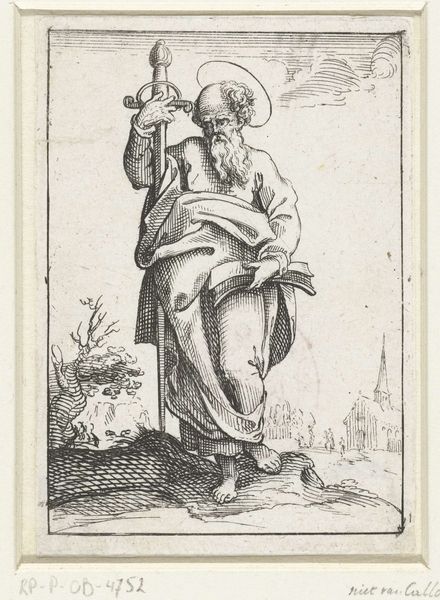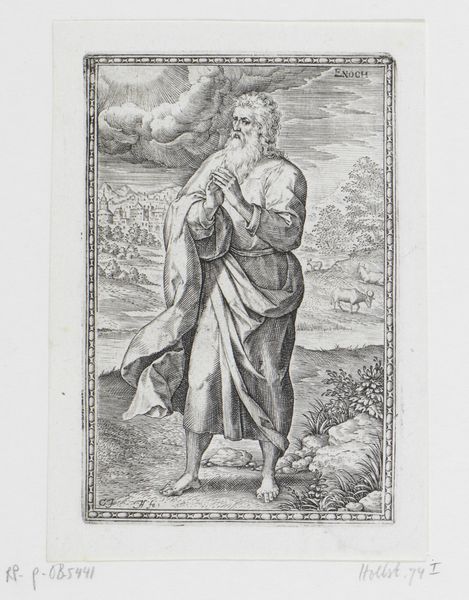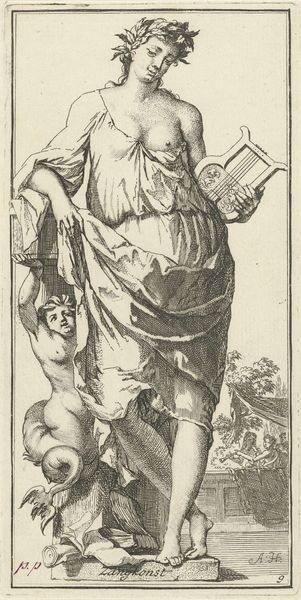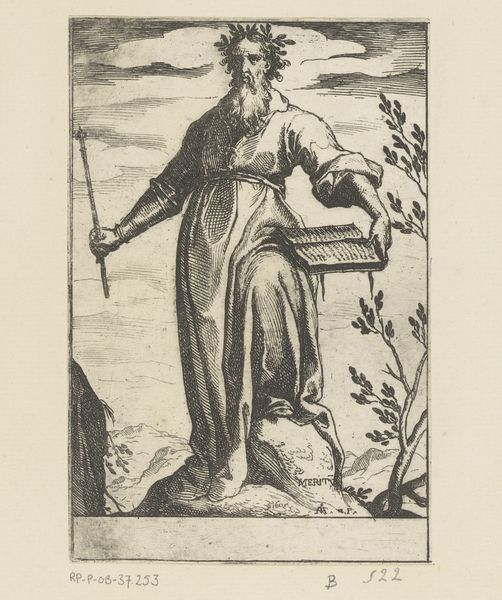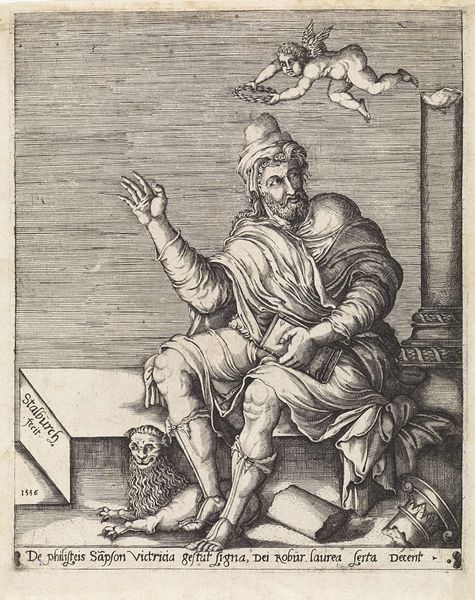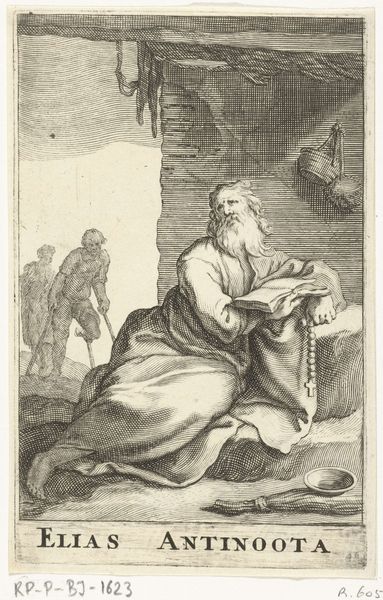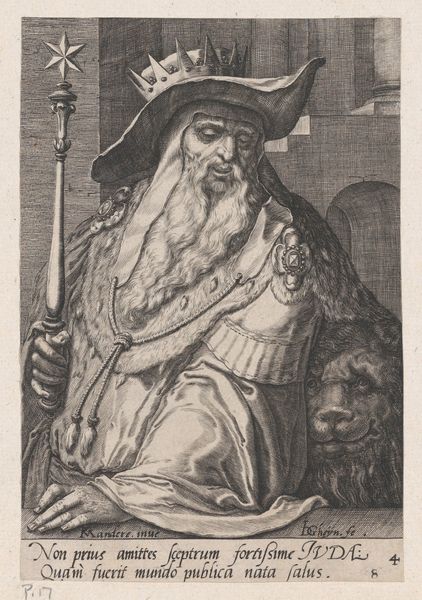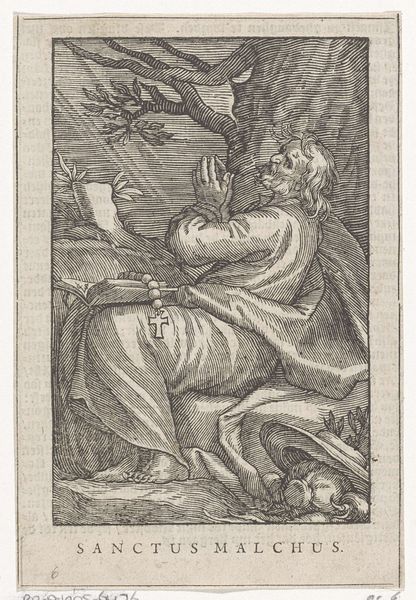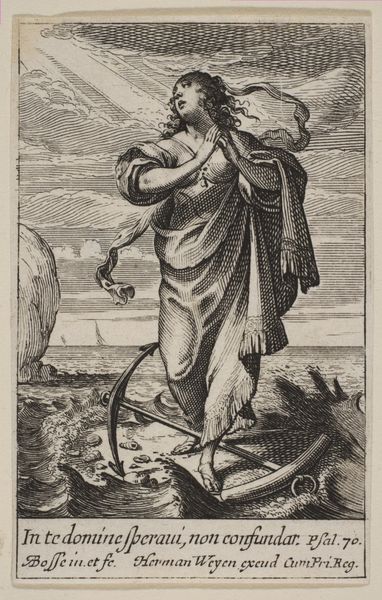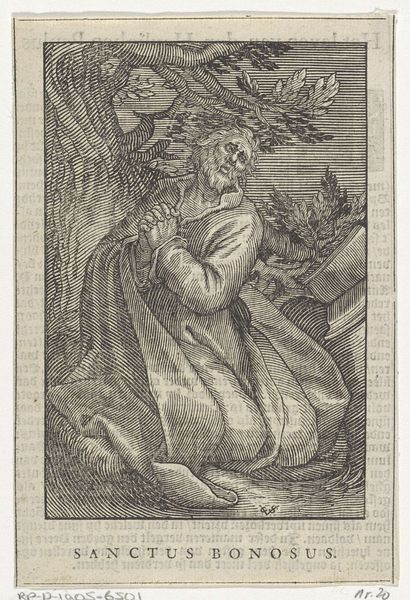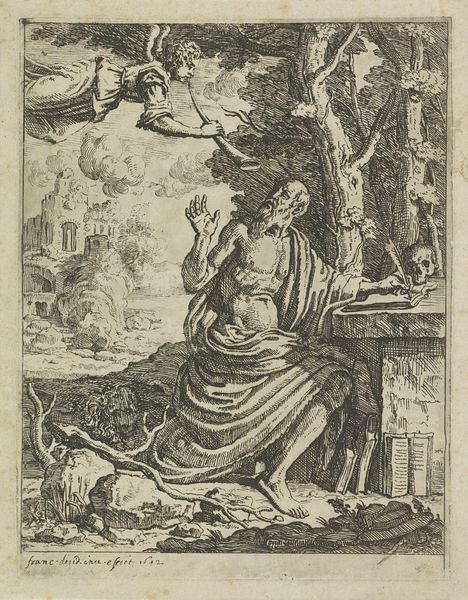
drawing, paper, ink
#
portrait
#
drawing
#
allegory
#
baroque
#
paper
#
ink
#
history-painting
Dimensions: height 114 mm, width 66 mm
Copyright: Rijks Museum: Open Domain
Curator: Here we have Jacob van der Ulft's "Ontwerp voor een titelblad met Aesculapius," a drawing from between 1637 and 1689. Editor: My eye immediately goes to the sheer detail achieved with ink on paper, it gives the whole composition an eerie, ethereal feel. What grabs you about this title page design? Curator: It is fascinating to consider what sort of printed work this would have been the cover for. The image alludes to both the medical and military fields; we see Aesculapius with his serpent entwined staff accompanied by what appears to be a dog and even a dragon alongside what seems to be a plumed helmet perched atop a pole, so perhaps an exploration of the impacts of war on public health. Editor: The textures are so wonderfully rendered – from the scales on the caduceus to the folds in Aesculapius’s robes. Look closely and you see van der Ulft builds volume using simple hatching and subtle shifts in tone. The base materiality creates its cultural and communicative meaning. I would like to study what paper he chose; that would give insight to the networks he developed. Curator: And what about its reception within its period? Aesculapius was widely revered, representing healing and knowledge at a time of profound scientific exploration and religious conflict. Van der Ulft's work cleverly merges these realms, aligning healing arts with perhaps political aspirations via military prowess—essential aspects of Baroque ideals in public consciousness. Editor: You are right to notice this symbolic fusion of war and medicine, perhaps demonstrating the inseparability of the human desire for destruction with the instinct for survival and healing. Curator: Precisely, making this title page more than just ornamentation. It frames discourse of health, conflict, and societal power, reflecting back contemporary concerns to the early modern world. Editor: Indeed, and van der Ulft reminds us how essential art's production—ink, paper, skill—was in forging such meanings to start. Curator: It's works like these that help to peel back layers of the society which shaped not only the materials used but also what they represented. Editor: An economy of representation so intrinsic to Baroque cultural life, rendered material here on the page.
Comments
No comments
Be the first to comment and join the conversation on the ultimate creative platform.
